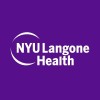
Telemedicine Monitoring of Sleep Apnea in Stroke
StrokeSleep ApneaStudy Objectives: Meta-analyses report a high prevalence of moderate to severe sleep apnea of more than 50% in stroke patients, with adherence rates for CPAP therapy of only 30%. The primary objective of this study is to determine whether CPAP adherence in stroke patients with obstructive sleep apnea can be improved by a CPAP training strategy during rehabilitation combined with a telemedicine monitoring system after discharge. The secondary objective is to compare recording quality as well as subjective and objective sleep data of non-attended level III polygraphy, polysomnography and telemetric CPAP data in the management of sleep apnea in stroke. Further the investigators aim to study changes in nocturnal systolic blood pressure due to CPAP therapy with the pulse transit time method. Finally, the investigators intend to study the relationship between CPAP compliance, sleep and medical and neurorehabilition outcome parameters. Design: Single-blind, mono-center, randomized controlled trial on standard CPAP treatment as compared with CPAP treatment with a telemedicine monitoring system in stroke patients with moderate to severe OSA. Setting: Neurorehabilitation center in Vienna, Austria Patients: Adult subacute (1 to 12 months post stroke) stroke patients 18-70 yrs of age) with moderate to severe OSA (apnea hypopnea index (AHI) ≥ 15/hr) determined by non-attended polysomnography (AHI) ≥ 15/hr of sleep) or level III polygraphy (AHI) ≥ 30/hr of out-of-center sleep testing (OCST), who undergo successful CPAP training and titration (goal AHI< 10) at the neurorehabilitation unit. Interventions: Patients will be randomized to either standard care with an autotitrating CPAP device or an autotitrating CPAP device that transmits physiologic information (i.e., adherence, air leak, residual AHI) daily to a website that will be reviewed by their homecare provider. If any problems are identified, the patient will be contacted by his homecare provider by telephone. Neurologists performing sleep and neurological scoring will be blinded to the randomization. Measurements: Recording of the different measuring systems, subjective and objective sleep quality, CPAP adherence after 3 months and 1 year in hours used per night, systolic BP determined by means of a non-linear algorithm and an individual one-point calibration of the pulse transit time obtained with a cuff-based BP measuring system (SOMNOmedics GmbH, Germany) and neurorehabilitation outcome parameters as Barthel Index, Timed Up and Go Test.

Efficacy of Whole Extract of Licorice in Neurological Improvement of Patients After Acute Ischemic...
Acute StrokeStroke is one of the most important causes of mortality and disability both in developed and developing countries. The only food and drug administration (FDA) approved therapy for acute stroke is recombinant tissue plasminogen activator (rtPA). But narrow therapeutic window has limited the usefulness of thrombolytic therapy. Therefore, finding effective neuroprotective drugs for the patients for whom thrombolysis is contraindicated or not feasible seemed to be mandatory in the world of cerebrovascular medicine. Licorice, extracted from root of a plant scientifically known as Glycyrrhiza glabra, is used in food industries. Certain medical properties has been contributed to licorice and specifically to its active chemical components such as flavonoids and glycyrrhizic acid (GA). GA has been revealed to assert its anti-inflammatory effect by suppression of NF-κB, a key component of lipopolysaccharide-induced inflammatory response. Neuroprotective characteristics of GA has been widely investigated in recent studies. In the present study, the investigators verified the efficacy and safety of oral administration of two different doses licorice extract in the patients with acute ischemic stroke, in a double-blind randomized controlled trial.

Acupuncture for Ischemic Post-stroke Depression
Post-stroke DepressionThis is a multicentre, single Blind ,randomized controlled clinical trial in ischemic post-stroke depression patients.The participants will be allocated randomly in either of the two groups: verum acupuncture plus placebo medication group or sham acupuncture plus true medication group. On the hypothesis that acupuncture intervention could produce the same therapeutic effects as antidepressants. The investigators also hypothesized that acupuncture would be associated with minimal side effects.

Use of Virtual Reality Games for the Treatment of Balance and Reducing the Occurrence of Falls in...
StrokeThe aim of this study was to investigate the therapeutic effect of virtual reality associated with conventional physiotherapy on balance during gait and the occurrence of falls in patients after stroke.

Speed of Processing Training in Traumatic Brain Injury
Traumatic Brain InjuryVascular Accident1 moreThe purpose of this project is to test the hypothesis that Speed of Information Processing (SIP) deficits in acquired brain injury (ABI) can be remediated. The majority of individuals with acquired brain injuries have speed of information processing deficits as part of the cognitive sequelae of the brain injury. Empirical research is expected to demonstrate the efficacy of computerized cognitive Speed of Information Processing (SIP) training in individuals with ABI. Study participants will be asked to attend two study visits over the course of approximately 13 weeks. Participants will be randomly assigned to either the experimental or control group.

Interest of Direct Aspiration First Pass Technique (ADAPT) for Thrombectomy Revascularisation of...
Ischemic Cerebrovascular AccidentMechanical thrombectomy (TM) is now validated through 4 randomized controlled trials of high scientific level as the reference treatment of cerebral infarction associated with proximal cerebral occlusion (MR CLEAN, ESCAPE 2014, 2015). These studies have shown for the first time a major decrease (-35%) of disability related to severe cerebral infarction and reduction in mortality. These studies only used thrombectomy devices called stent retriever for obtaining recanalization rates ranging from 58-72% for the 2 largest studies (MR CLEAN, ESCAPE 2014, 2015). This criterion "recanalization" is important because it largely determines the functional prognosis of patients with severe cerebral infarction (Khatri, 2014). These results are exciting but we can do even better. Indeed, already new thrombectomy devices are available with a special interest for ADAPT (A Direct Aspiration First Pass Technic). This distal suction system, with a high level of endovascular navigability, provides high recanalization rates (> 90%), low morbidity, with a synergistic effect with stent retriever (Turk A, Kowoll 2014 and 2015). To date, these technic (ADAPT) has never been assessed in a randomized controlled trial. We have previously conducted a comparative observational study between two recanalization strategies by thrombectomy using first-line ADAPT or the most widely used stent retriever. The interventional neuroradiologist could, in case of recanalization failure with the Solitaire system, used another thrombectomy material left to the operator's choice. 244 consecutive patients on two centers (Rothschild Foundation, and Foch Hospital, France) admitted for a cerebral infarction associated with proximal occlusion were included. This is so far the largest series of patients with ADAPT system. The complete recanalization rate was 84% with ADAPT versus 68% with stent retriever (P = 0.006). Unpublished data, Oral presentation at the European Stroke Organization, April 2015). Our research aims to show that a first line strategy of recanalization by thrombectomy using a distal suction system (ADAPT) is superior that the use of a stent retriever.

Efficacy and Safety of Ryanodex® (EGL-4104) as Adjuvant Treatment in Subjects With Exertional Heat...
Heat StrokeStudy EGL-4104-C-1502 is a phase 2, single-site, open-label, randomized, 2-arm parallel study of Ryanodex for the adjuvant treatment of exertional heat stroke (EHS) administered intravenously (IV), to current standard of care (SOC). SOC for the treatment of EHS is defined as effective body cooling, which should be implemented as quickly as available after diagnosis of exertional heat stroke.

A New Rehabilitation Treatment Following Stroke
StrokeStroke is the number one cause of disability in the United Nations with about 1 million new cases each year. Following stroke, patients with perceptual and cognitive impairments have the worst prognostic outcomes. There is evidence to suggest that perceptual and cognitive symptoms can be alleviated by multisensory integration, which has the effect of enhancing motor, perceptual and cognitive processes. This research project will investigate for the first time the functional benefits that stem from multisensory stimulation of attention in stroke patients with perceptual and cognitive impairments. The research project will involve multisensory learning paradigms with stimulus and environmental parameters that optimally enhance perceptual learning and cognitive function. Multisensory learning paradigms will be tailored for patients with stroke to determine the perceptual and cognitive symptoms that can be alleviated, and fMRI will be used to evaluate the underlying neural substrates of the effects. The project will show whether multisensory stimulation provides an effective means of attentional rehabilitation after stroke and whether the effects generalize to everyday life, with long-term outcomes that improve functional independence in patients with stroke.

Study to Assess the Safety, Pharmacokinetics, and Pharmacodynamics of DS-1040b in Subjects With...
Acute Ischemic StrokeThrombotic DiseaseThis is a Phase 1b/2, double-blind (study participants and Investigators), placebo-controlled, randomized, single-ascending dose, multi-center study to assess the safety, tolerability, pharmacokinetics (PK), and pharmacodynamics (PD) of DS-1040b in participants with Acute Ischemic Stroke (AIS).

Take Off Pounds After Stroke Trial (TOPS)
StrokeObesity2 moreThe Take Off Pounds after Stroke (TOPS) trial is a Prospective Randomized Open-Label Blinded Endpoint (PROBE) study that will test a 12-week high protein, calorie restricted, partial meal replacement program, compared to enhanced standard care, for efficacy in achieving clinically significant weight loss without impairment of physical function patients with elevated body mass index (BMI) following a recent ischemic stroke.
